Bouddi National Park bushwalkers memorial remembers lost soldier
There are only two memorials in NSW remembering bushwalkers who died in war and one of them lies almost forgotten at one of the most beautiful lookouts in the Central Coast. It’s a sad tale.
Central Coast
Don't miss out on the headlines from Central Coast. Followed categories will be added to My News.
At the end of the track to Bullimah Spur in Bouddi National Park at Killcare, the story of a lost soldier is fading into history.
The track opens onto one of the most spectacular views on the NSW Central Coast — looking south over Putty Beach, Box Head and across the mouth of Broken Bay to Barrenjoey Lighthouse.
On a clear day you can see the modern Sydney skyline way off in the distance.

With views like this it would be easy to miss the small weathered plaque on the rock platform below your feet — one of just two memorials in NSW remembering bushwalkers who died in war.
The tiny memorial is to Charles D’Arcy Roberts — a name few people have heard of, and whose contribution almost nobody remembers.
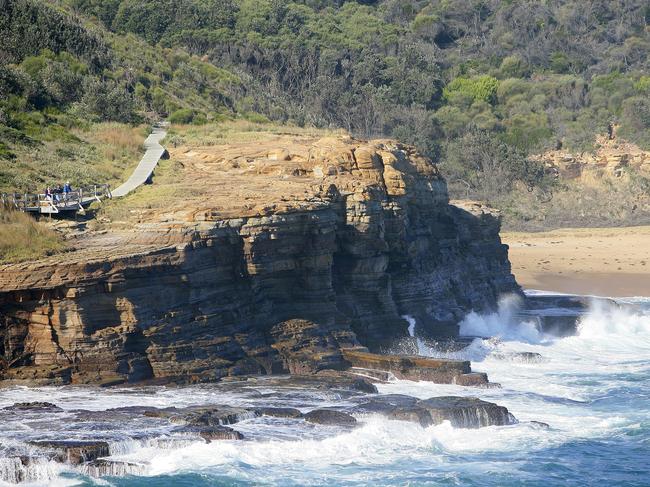
This year marks 70 years since his family and friends installed the plaque.
Charles D’Arcy Roberts was born March 6, 1909 in St Leonards. The family lived at Linfield on Sydney’s north shore.

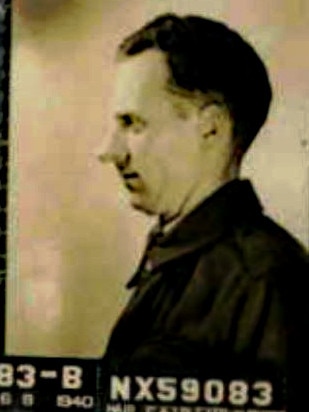
His great love in life was nature. He was a keen bushwalker and conservationist and a member of the Coast and Mountain Walkers Club and one time secretary of the NSW Bushwalkers Federation (now Bushwalking NSW).
He was instrumental in the creation of Bouddi National Park on the Central Coast — one of the first such parks in NSW — and was a trustee for a number of years.
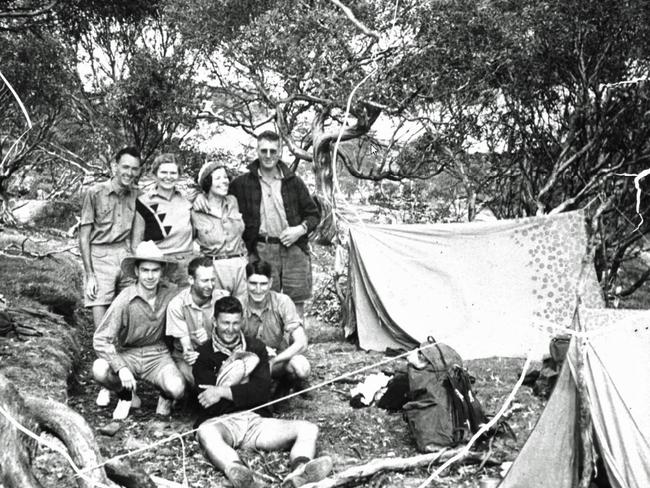
He was a keen photographer and a collection of black and white lantern slides taken by him of the Snowy Mountains in 1935 is held in the Australian National Library.
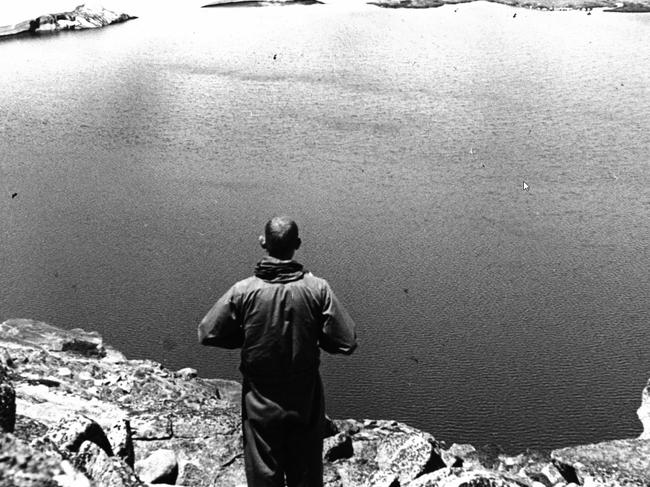
The images include Abbott Peak, Blue Lake, Charlottes Pass, Dead Horse Creek, Geehi River, Lake Albina, Lake Cootapatamba, Mount Kosciuszko, Seaman’s Hut, Snowy River, Wilkinson’s Valley, Leatherbarrel Creek and Tom Groggin. The pictures— some of which include him — reflect his love of nature and his frequent hiking adventures.
Sent to Singapore
Charles Roberts was 31 when he enlisted at Paddington on August 26, 1940 and was posted to the signals division Australian Infantry Forces, then transferred to 8th division signals at Liverpool a year later. He sailed for Singapore on February 19, 1941. He carried out a variety of duties but none as punishing as the Battle of Muar at Parit Sulong on the Malay Peninsula, north of Singapore in January 1942.
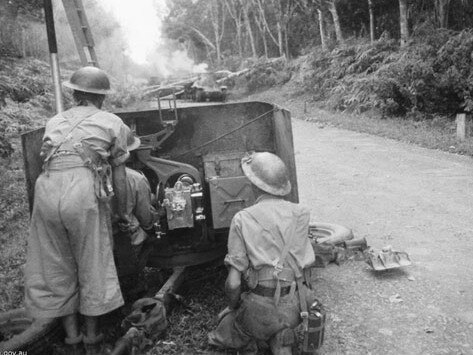
The Battle of Muar was the last major battle of the Malayan Campaign during World War II. It took place from 14—22 January 1942. Australian and Indian forces engaged in a desperate battle against the Japanese Imperial Guards Division and the men of 8th Division Signals maintained communications.
During the battle and retreat more than 300 Australians died. However, with the assistance of local people, many escaped, including Charles Roberts. He suffered a bomb wound to his left shoulder and was hospitalised in Singapore before rejoining his unit.
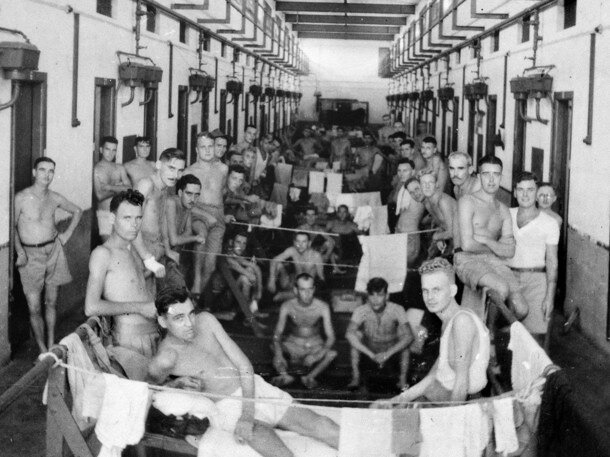
When Singapore was surrendered to the Japanese Charles Roberts landed in Changi Prison.
Worse was to come when he found himself as part of F force — one of the last forced-labour gangs to leave Changi to work on the notorious Thai Myanmar Railway. F Force consisted of 3662 Australians and 3400 British. When isolated in far up-country Thailand, remote from food and medical supplies, and drenched by monsoonal rains, 29 per cent of the Australians and 60 per cent of the British prisoners died.
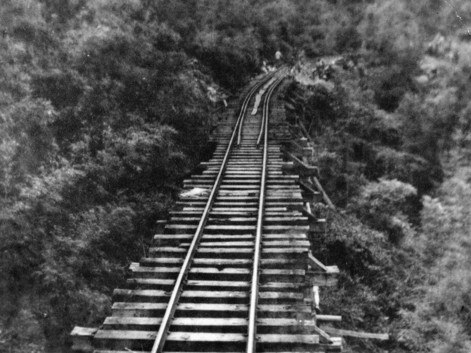
Charles Roberts ended up in a camp located only short distance from Three Pagodas Pass and the border called Kami Songkurai which was one of the most remote camps that Australians occupied on the Thai — Myanmar railway. F Force arrived there on 25 May 1943. Within a day of their arrival, working parties were sent out to work by the Japanese.
He would soon succumb to the conditions and died there on July 3, 1943 of cerebral malaria. It must have been a horrible end, far from the ruggedly beautiful Bouddi National Park he had loved. They buried him in the jungle at Kami Songkurai.
Much later, his remains were reburied at Thanbyuzayat War Cemetery 65 kilometres south of the port of Moulmein at the foot of the hills which separate the Myanmar from Thailand.

Memorial to bushwalkers
There are two NSW war memorials which honour bushwalkers who died during WWII — and Charles D’Arcy Roberts’ name is linked to both.
His name is on the honour roll of the main Bushwalkers’ War Memorial at Splendour Rock in Blue Mountains National Park. The isolated memorial was set up by NSW Bushwalking Federation and is at least a half day’s walk from the nearest car park. Bushwalkers still set off pre-dawn on Anzac Day to commemorate the fallen at this spot. The simple bronze plaque was unveiled on Mount Dingo, in the heart of the Wild Dog Mountains, by bushwalking pioneer Paddy Pallin and 80-90 Bushwalkers at sunrise on Anzac Day 1948. These are the words spoken by Paddy Pallin:

“Those familiar landmarks — Mt Cloudmaker, the Gangerang Range, Mt Paralyser and Mt Gouougang — a spiritual home of the Bushwalkers — all lie within our gaze from this wonderful viewpoint. We could wonder how often had our fallen comrades gazed in happiness upon this scene that we still enjoy? Upon this rock, as sunrise lit the cliffs they loved so well, was placed a permanent record that we honoured those known and unknown Bushwalkers, who gave their lives for our freedom. And, their splendour shall never fade.”
Bouddi Memorial
About a month after the unveiling of the Splendour Rock Memorial, another plaque was erected, specifically to the memory of Charles D’Arcy Roberts in Bouddi National Park — the park he loved so much and had worked so hard to establish.
He was one of the three trustees from the Bushwalking Federation of NSW appointed when Bouddi National Park was declared — one of the earliest “natural” parks in NSW.

Others were Hudson Smith and solicitor and conservationist, Marie Byles. Local government also had three trustees — including at one time Arthur Edward Lillicrap who was Erina Shire president in 1944. They used to hold trustee meetings on the beach.
“After the war was over we thought of ways and means to commemorate him in Bouddi Natural Park. Eventually we decided to get leave to name the beach south west of Maitland Bay, Bullimah, the Home of the Great Spirit and erect a plaque on Bullimah outlook in honour of Charlie. On a windy afternoon of 30th May, 1948, Mr Lillicrap officiated, and Charlie’s parents came to the little commemoration ceremony there,” Marie Byles wrote later.
